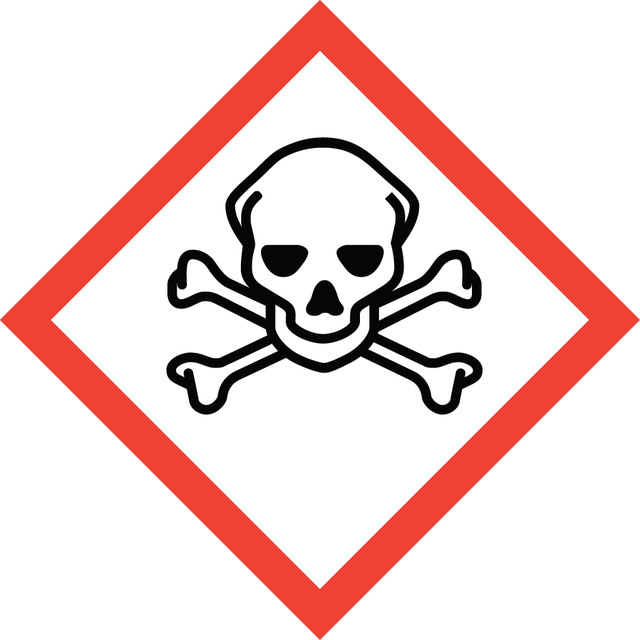Sign Into View Organizational & Contract Pricing
Select a Size
About This Item
Empirical Formula (Hill Notation):
C5H7N3O4
CAS Number:
Molecular Weight:
173.13
Beilstein:
1726602
EC Number:
MDL number:
UNSPSC Code:
12352209
PubChem Substance ID:
NACRES:
NA.26
Quality Level
Assay
≥98% (TLC)
form
powder
color
off-white to yellow-green
antibiotic activity spectrum
fungi
Mode of action
enzyme | inhibits
storage temp.
−20°C
SMILES string
N[C@@H](COC(=O)C=[N+]=[N-])C(O)=O
InChI
1S/C5H7N3O4/c6-3(5(10)11)2-12-4(9)1-8-7/h1,3H,2,6H2,(H,10,11)/t3-/m0/s1
InChI key
MZZGOOYMKKIOOX-VKHMYHEASA-N
Looking for similar products? Visit Product Comparison Guide
General description
Chemical structure: amino acid derivatives
Application
Used in cell culture for the selection of HGPRT revertants.
Biochem/physiol Actions
Azaserine is an antibiotic and antifungal; it may also act as a tumor inducer. It is a structural analog of glutamine and competes with glutamine in binding to enzymes involved in purine biosynthesis. Azaserine inhibits purine biosynthesis by covalently reacting with cysteine residues in the enzyme active sites, such as in formylglycinamide ribonucleotide amidotransferase and PRPP amidotransferase. Azaserine can induce DNA damage via the formation of carboxymethylated bases and O6-methylguanine. Secretion of exo-1,3-β-glucanase and germ-tube formation of Candida albicans were inhibited by azaserine.
Signal Word
Danger
Hazard Statements
Precautionary Statements
Hazard Classifications
Acute Tox. 3 Oral - Carc. 2
Storage Class Code
6.1C - Combustible acute toxic Cat.3 / toxic compounds or compounds which causing chronic effects
WGK
WGK 3
Flash Point(F)
Not applicable
Flash Point(C)
Not applicable
Personal Protective Equipment
dust mask type N95 (US), Eyeshields, Gloves
Choose from one of the most recent versions:
Already Own This Product?
Find documentation for the products that you have recently purchased in the Document Library.
Timea Beleznai et al.
Vascular pharmacology, 56(3-4), 115-121 (2011-12-14)
We hypothesized that under high glucose conditions, activation of the hexosamine pathway leads to impaired nitric oxide (NO)-dependent arteriolar dilation. Skeletal muscle arterioles (diameter: ~160μm) isolated from male Wistar rats were exposed to normal glucose (NG, 5.5mmol/L) or high glucose
S P Ram et al.
Journal of general microbiology, 130(5), 1227-1236 (1984-05-01)
Exo-(1----3)-beta-glucanase, beta-glucosidase, autolysin and trehalase were assayed in situ in Candida albicans during yeast growth, starvation and germ-tube formation. Cell viability, germ-tube formation, intracellular glucose-6-phosphate dehydrogenase and beta-glucosidase were unaffected in cells incubated in 0.1 M-HC1 for 15 min at
Kornberg, A., and Baker, T.
DNA Replication, 57-60 (1992)
Tusty-Jiuan Hsieh et al.
The Journal of endocrinology, 183(3), 535-550 (2004-12-14)
We reported previously that insulin inhibits the stimulatory effect of high glucose on the expression of angiotensinogen (ANG) gene in both rat immortalized renal proximal tubular cells (IRPTCs) and non-diabetic rat renal proximal tubular cells (RPTCs), but has no effect
Angana Gupta Rajapakse et al.
American journal of physiology. Heart and circulatory physiology, 296(3), H815-H822 (2009-01-13)
Hexosamine biosynthetic pathway (HBP) accounts for some cardiovascular adverse effects of hyperglycemia. We investigated whether the HBP inhibitor azaserine protects against hyperglycemia-induced endothelial damage dependently of HBP. Human endothelial cells isolated from umbilical veins were exposed either to a high
Related Content
Our team of scientists has experience in all areas of research including Life Science, Material Science, Chemical Synthesis, Chromatography, Analytical and many others.
Contact Technical Service
